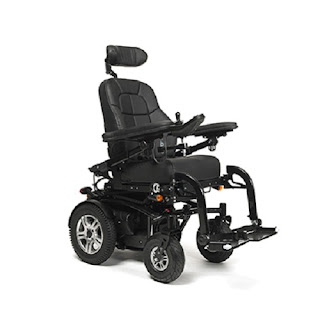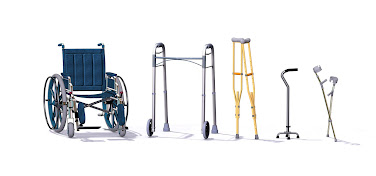Beyond Transportation: How Mobility Services Are Changing Lives
In an age where convenience and accessibility are paramount, mobility services are emerging as transformative forces in our society. These services extend beyond mere transportation; they encompass a range of wheelchair hire solutions that enhance mobility, improve quality of life, and foster independence for individuals across various demographics.
From ridesharing platforms to specialised transport for the elderly and disabled, mobility services are reshaping the way we think about movement in our communities.
The Rise of Mobility Services
The advent of technology has catalysed a shift in how we approach transportation. Apps like Uber and Lyft have revolutionised personal transport, making it easier and quicker to get from point A to point B.
However, the concept of mobility services goes beyond traditional ridesharing. It encompasses a comprehensive ecosystem designed to meet diverse needs, including public transportation improvements, accessible services for people with disabilities, and innovative solutions for the elderly.
Enhancing Accessibility for All
One of the most significant impacts of mobility services is the increased accessibility they offer. Many individuals, particularly those with disabilities, have long faced challenges in accessing reliable transportation. Traditional public transport options may not accommodate wheelchairs or provide the necessary assistance for individuals with mobility impairments.
Enter specialised mobility services designed with inclusivity in mind. Companies like Via and GoGoGrandparent focus on providing tailored transport solutions for seniors and those with disabilities, offering vehicles equipped with ramps and drivers trained to assist passengers.
These services are not just about transportation; they are about fostering independence, allowing individuals to attend appointments, socialise, and engage with their communities without relying solely on family or caregivers.
Redefining Public Transportation
Public transportation mobility equipment & services are also evolving to meet the demands of modern society. Many cities are integrating mobility services into their public transit frameworks, creating seamless connections between various modes of transport.
For instance, on-demand shuttle services can complement fixed-route buses and trains, ensuring that individuals can reach their destinations even when public transport routes may not be directly available.
Moreover, advancements in technology have allowed for real-time tracking and scheduling of public transport. Mobile apps provide users with up-to-the-minute information about bus and train arrivals, enabling better planning and reducing wait times. This increased efficiency not only enhances user satisfaction but also encourages more people to utilise public transport, ultimately reducing traffic congestion and environmental impact.
The Economic Impact of Mobility Services
Mobility wheelchair hire services are not just beneficial for individuals; they also have a broader economic impact. By improving access to transportation, these services enable individuals to engage more actively in the workforce.
People can seek employment opportunities without being hindered by transportation barriers, leading to higher employment rates and economic stability within communities.
Furthermore, mobility services can stimulate local economies by connecting residents to businesses and services that might otherwise be inaccessible.
For instance, a mobility service that provides rides to shopping centres or local events can enhance community engagement and drive foot traffic to local establishments, benefiting small businesses and fostering a vibrant local economy.
Safety and Comfort: A Priority
Safety is a paramount concern in mobility services. Companies are increasingly investing in training drivers to ensure that they provide not only safe transport but also a comfortable and respectful experience for passengers. This is especially crucial for vulnerable populations such as the elderly or those with disabilities.
Additionally, many mobility services implement stringent safety measures, such as background checks for drivers, real-time monitoring of rides, and customer feedback systems. These practices foster trust and ensure that users feel secure when utilising these services.
The Future of Mobility Services
As technology continues to advance, the potential for mobility services to transform lives is vast. Innovations such as autonomous vehicles hold promise for enhancing accessibility further, particularly for individuals unable to drive.
Moreover, integrating mobility equipment & services with smart city initiatives can lead to more sustainable and efficient transportation systems.
In the near future, we may see increased collaboration between public transport authorities and private mobility service providers, creating a more holistic approach to urban mobility. This synergy will ensure that all individuals, regardless of their circumstances, can access the transportation they need to lead fulfilling lives.
Final Words
Mobility services are redefining the landscape of transportation, moving beyond traditional models to create solutions that empower individuals and enhance community connections. By focusing on accessibility, safety, and economic impact, these services are not just changing how we travel; they are changing lives.
As we continue to innovate and adapt, the future of wheelchair hire services promises even greater possibilities, ensuring that everyone can enjoy the freedom of movement in an increasingly interconnected world.




Comments
Post a Comment